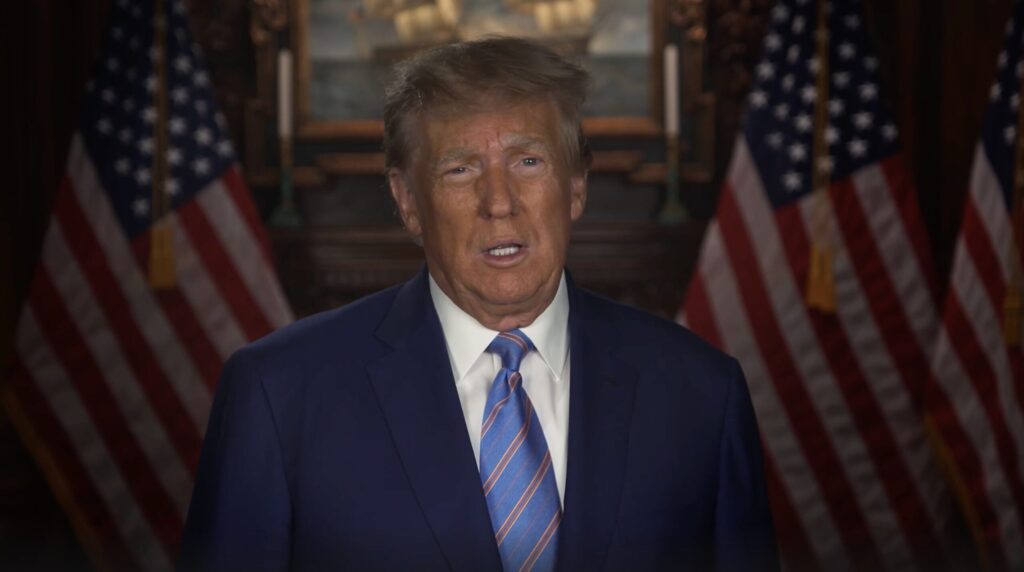Recently, multiple policy proposal videos by President Trump have gained traction on the platform X, particularly his commitment to dismantling what he terms the “deep state.” The video, originally shared in March 2023, has gained newfound attention following Trump’s significant electoral victory against Kamala Harris. This resurgence highlights a prevailing concern among the American populace regarding the perceived erosion of their rights and freedoms during the Biden administration. Through a combination of authoritarian COVID-19 mandates and revelations of censorship from Twitter files, there has been an increasing call for greater government accountability. The anxiety and skepticism toward the current administration have contributed to a shift in media consumption, with X rising in the rankings of news apps, indicating a potential decline in the influence of traditional corporate media.
In his proposals, President Trump lays out a detailed plan to hold the government accountable, specifically targeting the deep state. Key initiatives include the removal of rogue bureaucrats through Executive Orders and cleaning up corruption within national security agencies, which he accuses of targeting groups such as Christians and conservatives. Other significant proposals consist of reforming the FISA court system and establishing a Truth and Reconciliation Commission aimed at declassifying instances of deep state surveillance and corruption. Trump also emphasizes a crackdown against government leakers who conspire with the media to subvert governmental functions, and advocates for independent auditor systems to monitor intelligence agencies and prevent unwarranted domestic spying.
A central theme within Trump’s proposals is the belief that the Biden administration has weaponized federal agencies like the FBI and DOJ to silence political adversaries, particularly conservatives. He points to a leaked FBI memo that classified traditional Catholics as potential domestic terrorists, as well as instances where federal bureaucrats allegedly colluded with social media platforms to censor free speech during the 2020 election. Furthermore, Trump highlights the abuse of the FISA process that allowed for the illegal surveillance of his campaign, illustrated by an inspector general report which found substantial errors in the FBI’s warrant applications derived from partisan opposition research.
Despite the ambitious nature of his proposals, there are doubts about their feasibility, particularly concerning the imposition of term limits on Congress members, which would require bipartisan cooperation that seems improbable given current political dynamics. Nonetheless, recent electoral results suggest a shift towards Republican control, with Trump potentially securing over 300 electoral votes and increased representation in both the Senate and House of Representatives. This electoral strength signals a possible public mandate for some of Trump’s reforms, despite the skepticism surrounding their implementation.
In tandem with his push against traditional media, Trump has successfully circumvented mainstream channels, especially after his removal from Twitter. He launched Truth Social, which has allowed him to communicate directly with his audience, thereby maintaining his influence amidst a climate of distrust in legacy media. Reports surrounding issues such as the Russia hoax and Hunter Biden’s laptop debacle have further diminished public faith in established media outlets. As viewership plummets for these channels, platforms like X have become significant for reshaping public discourse, allowing figures such as Charlie Kirk and Elon Musk to amplify Trump’s agenda.
As President Trump approaches his upcoming inauguration, he appears poised to capitalize on the ongoing distrust in mainstream media, the public’s desire for reform, and his recent electoral victories. The convergence of these factors might equip his administration with the mandate needed to enact sweeping changes to government operations and accountability. The emerging dialogue surrounding government efficiency and transparency, coupled with increased grassroots support, could lead to notable developments in U.S. governance reflective of Trump’s policy aspirations. With these dynamics in play, the future of Trump’s proposed policies hinges on the interplay between public sentiment, his administration’s resolve, and the contentious political landscape he aims to navigate.

